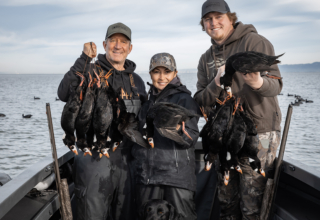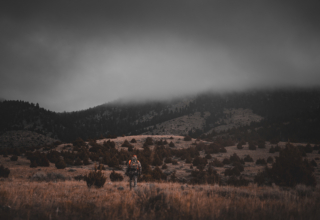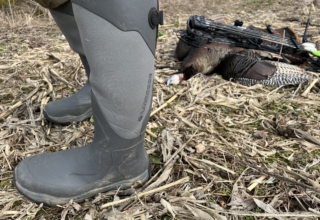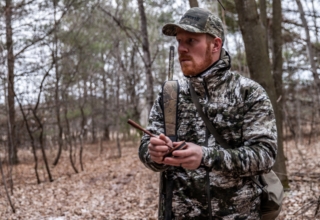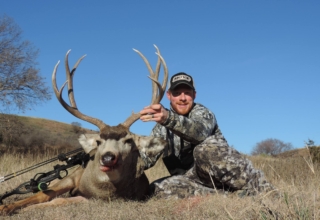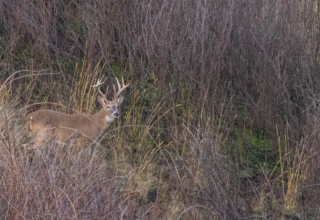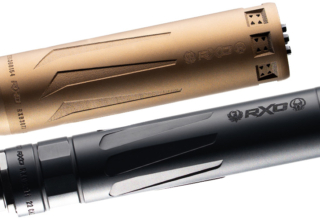Are you embarking on your first elk hunt ever, or at least your first elk hunt in a brand-new area? Let these tips guide you to the elk.
by Darron McDougal
The morning I bow-killed my first bull elk was a circus. I’d encountered plenty of elk in the days leading up to it, but that morning, in particular, was filled with elk activity that you typically only see on the big screen. From the first wink of daylight until noon, several different bulls shattered the silence almost nonstop with bugling. I was dogging a herd, and so were a handful of satellite bulls. At one point, I cow-called a 6-point bull to 60 yards, but his vitals were covered.
At noon, everything finally fell into place. I came to full draw on a massive, old bull facing head-on just 14 yards away. My arrow drove deep into his chest. A hundred and some yards downhill, a gorgeous set of chocolate antlers remained still above a heap of delicious meals for the year ahead.

I wish finding action like I experienced that morning was always easy. On some well-managed ranches, it can be. However, hunts like that public land outing are increasingly challenging to come by. Still, I’ve had good success with “getting into elk,” as we elk hunters call it, by doing my due diligence on my HuntStand Pro app and then diving into specific haunts. Here are the places I look for.
Water First
Almost all successful elk hunts unfold near at least one water source. Rocky Mountain elk inhabit arid climates. According to some online research, a bull elk requires around four gallons of water daily. Elk obtain moisture from the grasses they consume, but you can bet they’ll have to hit some water source to meet their quota.
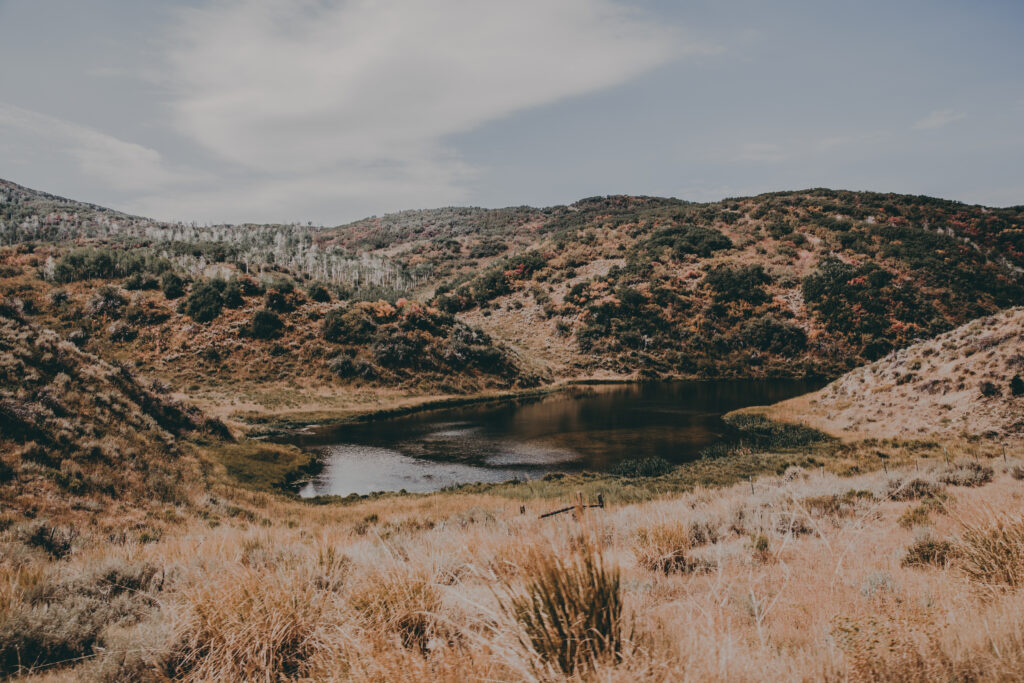
Even if you have no interest in sitting in a stationary blind or treestand, the most productive elk hunting happens near creeks, natural springs and seeps, high mountain lakes, waterholes, and beaver ponds. This is especially true if it is super dry and/or if there is dark timber nearby where elk can find shelter from the midday heat. Again, water is central to most successful elk hunts.
Cool Slopes
I just mentioned dark timber. I’m referring to mature evergreens that let minimal sunlight hit the forest floor. When such habitat occurs on a north-facing slope, it is the coolest place around. That’s why elk prefer these exact locations during hot September conditions. Aspen timber — while the leaves are still on the trees — can also be a good bet on a north slope. While elk can bed virtually anywhere they like, they seem to prefer benches with a steep slope above and below them. Danger from above or below will be easily detectable because the bench is tough to reach. Plus, the bench usually gives elk the wind advantage, too.
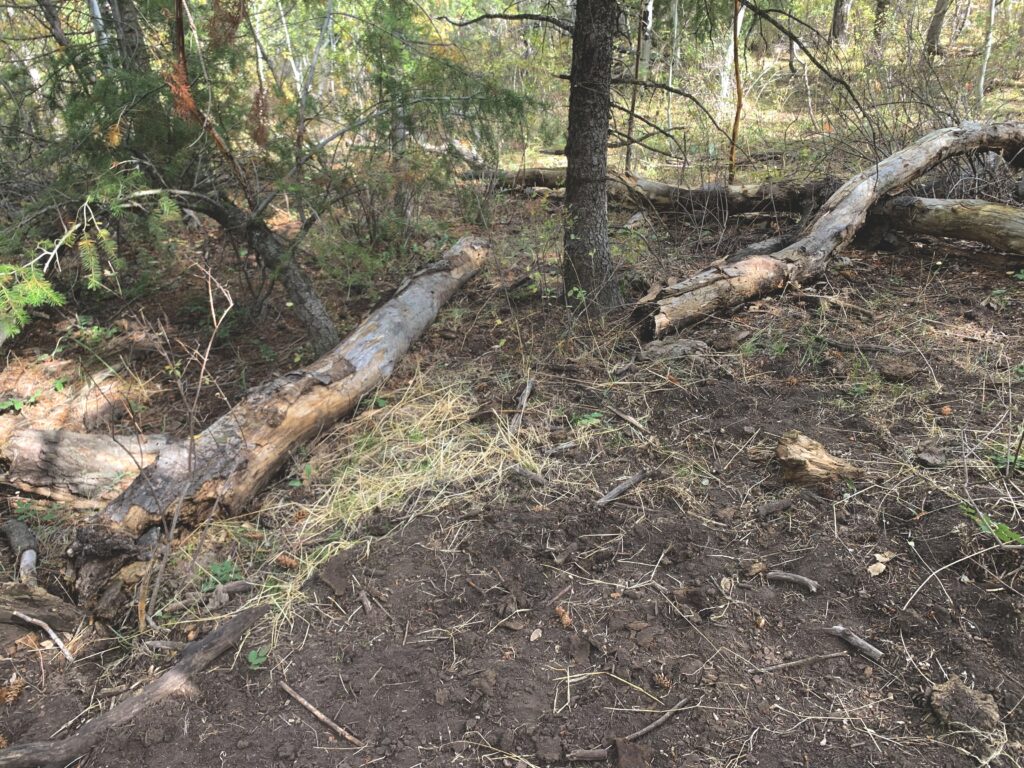
The good thing is that you can easily dial in on such spots using a hunting app such as HuntStand Pro. The Satellite or Hybrid base map can show you dark evergreen forests, and then when you transition into the Terrain base map or even 3D mode, you’ll be able to identify north slopes. Mark them on the app and hit them up during your hunt.
Just Above Ag Fields
Across the elk’s range, there are many instances in which forest service or BLM lands abut private lands featuring cattle-grazing pastures and even hayfields. While elk can undoubtedly make a living up in the higher country away from civilization, they don’t often turn down an evening meal at the Hayfield Diner. These scenarios are usually easy to spot on HuntStand Pro, too.
In situations like this, elk often bed up in the timber several hundred yards to a mile or more from the grazing on public ground. A pattern will likely develop if you put time in behind the glass. During an early morning hunt, elk will move off the fields and back up the mountain by daybreak, reaching their bedding area shortly after. In the afternoon, they’ll usually be on their feet and staging during the last hour of daylight — earlier if the temps are cool.
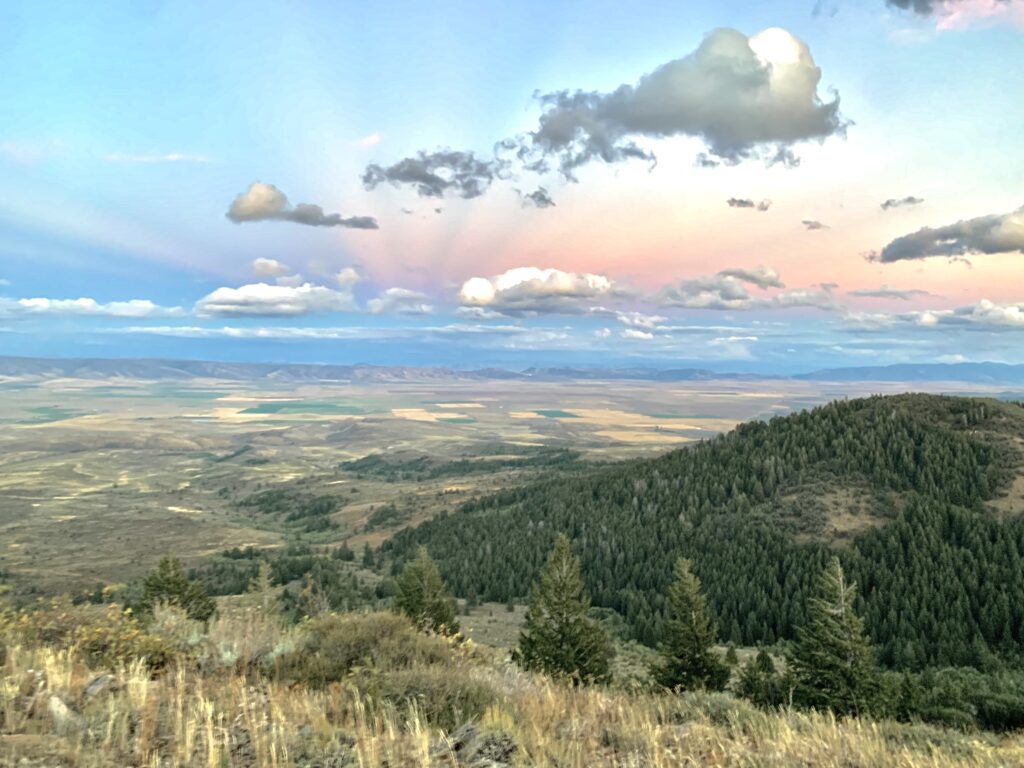
If you read between the lines, you figured out this puts the thermals to their advantage. Thermals are settling into low areas while the elk travel up to their bedding areas, allowing them to detect danger from above. Likewise, when they travel down toward hay ground, the thermals are usually still rising, making an approach from below extremely difficult. The best approach is often to hear a bull bugling and try to come in at his level. You can either try to catch him walking by or consider calling to him.
While elk traveling to and from ag fields is patternable, I’ve never experienced elk using the same exact trail day after day. They usually shift their route slightly, perhaps due to wind direction.
Mountain Meadows
Up in the high country, meadows with lush flora attract elk for grazing. These are particularly good when they occur well away from hunting pressure. Elk don’t often stick their neck out in the open in areas of heavy hunting pressure.
In 2022, I was glassing an utterly new area when I noticed many tan dots about four miles away in my Maven spotting scope. They were elk feeding in a wide-open meadow, miles from any trails.
When you’re scouting for meadows on HuntStand Pro or your app of choice, be attentive to roads, trailheads, and other land features that would make a meadow stand out or easily accessible to other hunters. Look for meadows that require a strenuous hike. Extreme uphill hikes reduce hunt pressure. I also look for meadows surrounded by big timber where elk can find quick sanctuary if pressured.
As far as hunting, calling elk into a meadow is incredibly challenging. Unless you have a decoy or a caller tucked back in the timber on the opposite end of the opening, calling a bull into a meadow usually ends with the bull peeking out from the edge, then turning away and leaving because he doesn’t see any other elk.
Clear Cuts or Burned Areas
When timber is decimated via logging or a wildfire, lush flora will likely grow back for several years, given sufficient precipitation. Hunters might perceive habitat loss at first, but the fact is that such areas become a wildlife buffet and are highly attractive to elk. The lack of timber also makes it easier to find animals from afar with optics. The downside is that there will be a lack of cover. The exception is when scorched timber eventually falls down and creates horizontal cover.
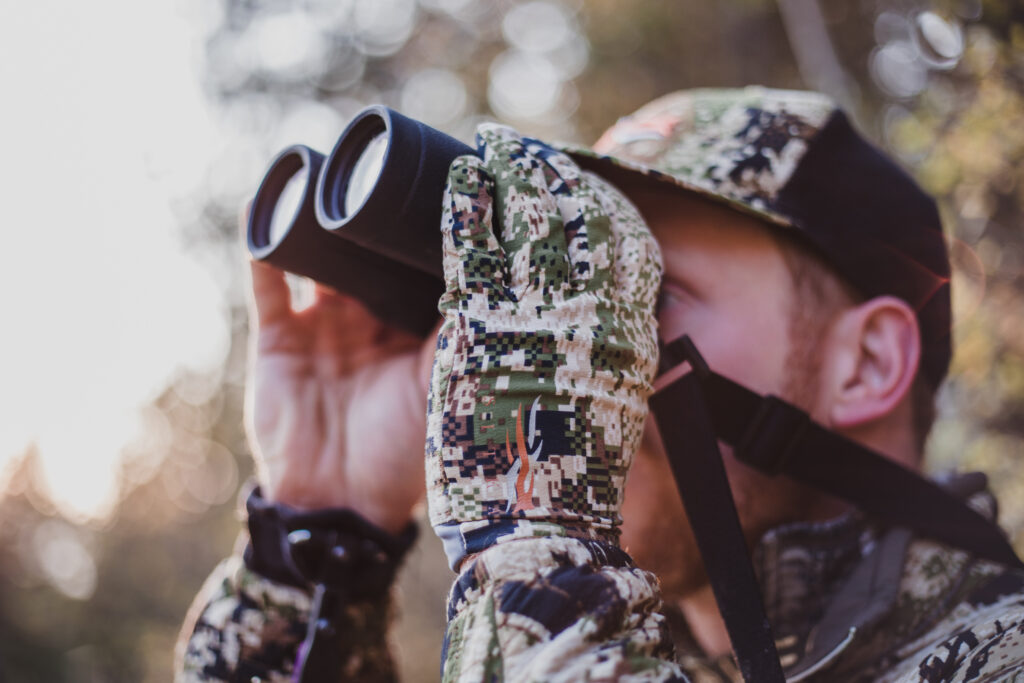
Where You Least Expect
I’ll never forget hiking down the mountain from a treestand set on a water seep. A bull had moved by just out of range. Then, the bull locked antlers with another bull downhill. With half an hour of daylight remaining, I climbed down and followed my ears toward the bull battle. The farther I went, the closer I got to my truck.
I emerged from the timber next to a creek at the bottom of a canyon. I still had not seen the bulls, which had since stopped fighting. Then, a bugle ripped out. Just beyond my parked pick-up truck was a big mature bull elk. He was 60 yards from the truck!
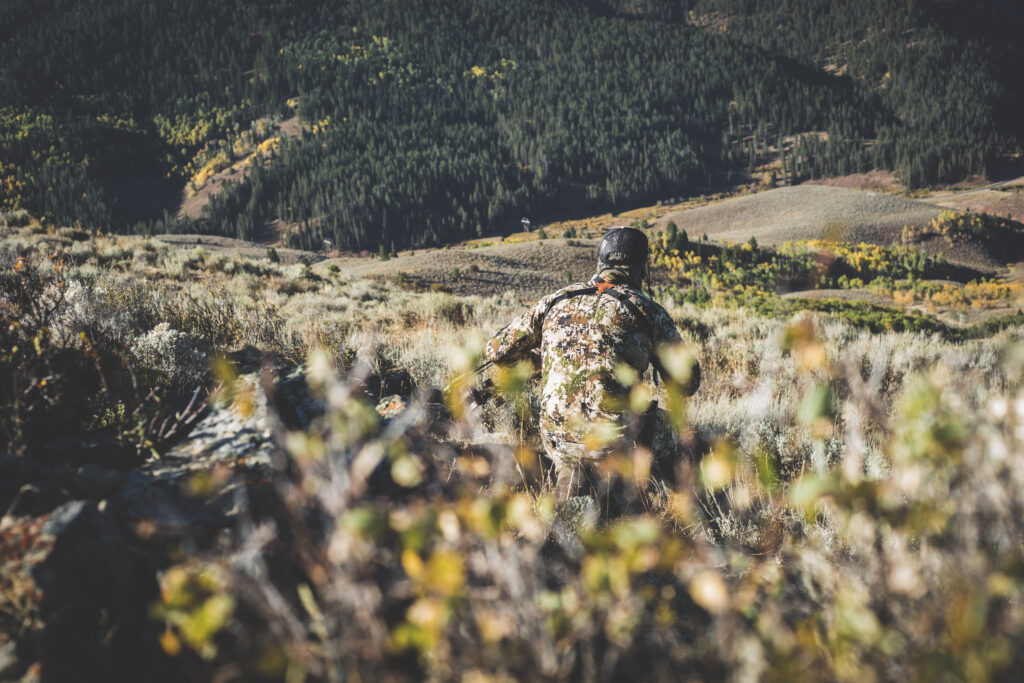
On the one hand, I was surprised. On the other hand, I wasn’t. That’s because I can’t count how often I’ve heard bugling from a paved highway in pressured units. Not many hunters think to look in such spots. Many misconceive the only way to find elk is to go five or six miles deep. Although it might take that much grit in some units, it doesn’t in others. I’ve gotten on so many bugling bulls less than a mile from the truck. The lesson is this: Don’t walk by elk to find elk.
A Few More Things
Elk have a vocabulary. On my first elk hunt, I bugled at bulls only to have them shut up and not make another peep. As good as my bugling sounded, I was challenging bulls and doing it from too far away. You’ll hear the Elk101 and Elk Nut teams talk about locator bugles. This call doesn’t threaten bulls but encourages them to disclose their whereabouts, allowing you to move in closer before you try cow calls or aggressive bugles. I’d suggest using resources from one or both of those companies to brush up on calling so that you don’t make the wrong call.
The locations I’ve noted here pertain mostly to September elk hunting. During the later rifle seasons, deep snow up in the high country can move elk down to lower elevations. And when the snow has not fallen, but hunting pressure has increased, look to the thickest, nastiest country where bulls group up following the rut and seek refuge from the blaze-orange crowds. These places are typically hard to reach, but they can also be down low in the oak brush, where visibility is limited.
Finally, elk are where you find them. Like the bull by my truck, I’ve been surprised more than once. I’ve seen elk from a Starbucks drive-thru and also in the wide-open just above several hunting camps. And while those instances are somewhat rare, they aren’t out of the question. Focus on the first five locations noted in my list — but be ready for anything — and you’ll generally find elk if you hunt wisely and use the wind to your advantage.


